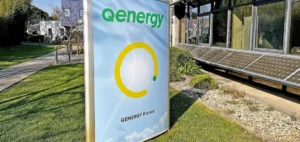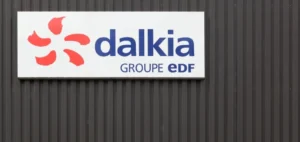The rapid expansion of artificial intelligence (AI) is triggering an unprecedented race for digital infrastructure, driven by major US technology companies. But this race is now facing a key structural constraint: access to sufficient power capacity to supply increasingly energy-hungry data centres.
Data centres, new epicentre of electricity consumption
Massive investments by Microsoft, Google, Amazon Web Services (AWS) and Meta in AI initially focused on processors, with record chip orders, notably from Nvidia. Now, the challenge lies in the availability of sites capable of hosting and powering the next generation of server farms. In the United States, these facilities take an average of two years to build, while the high-voltage lines needed to power them can take up to ten years to become operational.
This trend is putting mounting pressure on electricity providers, particularly in regions with a high concentration of data centres. In Virginia, Dominion Energy is facing cumulative demand of 47 gigawatts (GW), equivalent to the capacity of several dozen nuclear reactors.
Projected sharp increase in electricity demand by 2030
Several forecasts estimate that data centres could account for between 7 and 12% of total electricity consumption in the United States by 2030, up from about 4% today. This rapid rise is raising concerns among energy sector stakeholders, who are faced with difficult trade-offs between industrial needs and household supply security.
Some experts are urging caution. Jonathan Koomey, a researcher at the University of California, Berkeley, noted that many announced projects may never materialise, pointing to similar overstatements during the early 2000s internet bubble.
Coal rebounds, gas rises in energy mix
In response to potential shortages, several US energy providers have delayed the closure of coal-fired plants. Meanwhile, natural gas, which already powers 40% of data centres according to the International Energy Agency (IEA), is gaining popularity due to its rapid deployment capabilities.
In Georgia, an energy supplier recently requested approval to install 10 GW of gas-powered generators. Other players have acquired second-hand turbines abroad in emergency deals or have repurposed aircraft turbines to meet the demand.
Climate pledges revised and energy sources diversified
In light of the energy strain, tech groups are downplaying their climate commitments. Google no longer displays its 2030 net-zero target, while Microsoft, Amazon and others now prioritise investment in diversified energy solutions.
Amazon is supporting the development of small modular reactors (SMRs), while Microsoft and Google are betting on restarting decommissioned conventional nuclear reactors. In parallel, these companies are investing heavily in solar and battery storage, particularly in California and Texas.
Some projects are even reaching beyond Earth’s surface. Initiatives from Google and Elon Musk’s company xAI aim to power chips in orbit using solar energy from space, with testing planned from 2027.






















